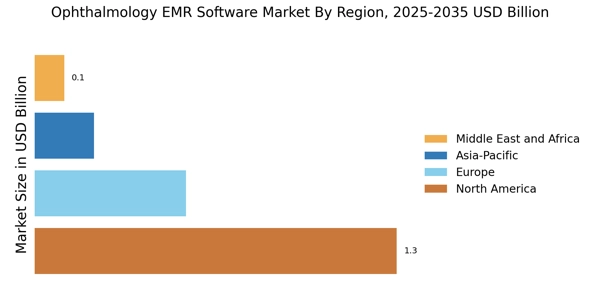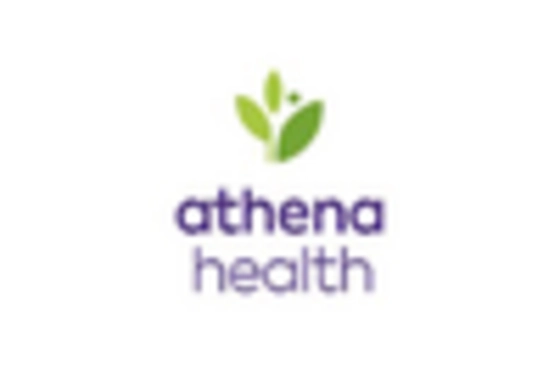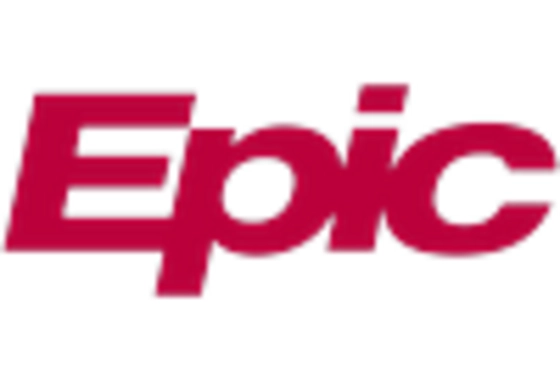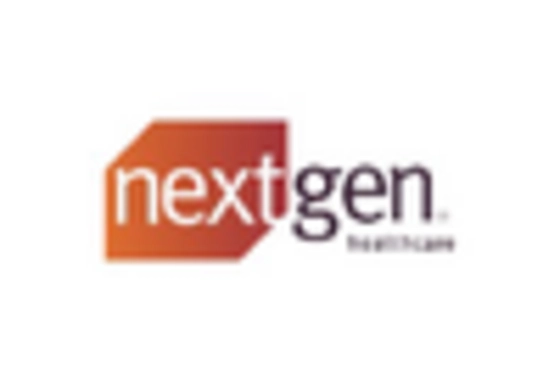Rising Prevalence of Eye Disorders
The increasing prevalence of eye disorders, such as cataracts, glaucoma, and diabetic retinopathy, is a primary driver for the Ophthalmology EMR Software Market. According to recent data, the number of individuals affected by these conditions is projected to rise significantly, leading to a greater demand for specialized ophthalmic care. This surge in patient volume necessitates efficient management systems, thereby propelling the adoption of EMR software tailored for ophthalmology practices. As healthcare providers seek to enhance their operational efficiency and improve patient outcomes, the integration of advanced EMR solutions becomes essential. The Ophthalmology EMR Software Market is thus positioned to experience substantial growth as practitioners increasingly recognize the need for comprehensive electronic records to manage the complexities of eye care.
Regulatory Compliance and Standards
The evolving landscape of healthcare regulations and standards is another critical driver for the Ophthalmology EMR Software Market. Healthcare providers are mandated to comply with various regulations, including those related to patient data security and interoperability. As these regulations become more stringent, the demand for EMR solutions that ensure compliance is likely to increase. Ophthalmology practices must adopt software that not only meets regulatory requirements but also enhances the quality of care provided to patients. The Ophthalmology EMR Software Market is thus influenced by the necessity for practices to implement systems that facilitate adherence to these regulations, ensuring both operational efficiency and patient safety.
Technological Advancements in EMR Solutions
Technological advancements in EMR solutions are significantly shaping the Ophthalmology EMR Software Market. Innovations such as cloud computing, mobile access, and data analytics are enhancing the functionality and usability of EMR systems. These advancements allow ophthalmology practices to streamline their workflows, improve patient data management, and facilitate better communication among healthcare providers. As technology continues to evolve, practices are increasingly inclined to adopt sophisticated EMR solutions that offer enhanced features and capabilities. The Ophthalmology EMR Software Market is thus likely to witness growth as practices seek to leverage these technological advancements to improve their operational efficiency and patient care.
Increased Focus on Data Analytics and Reporting
The increased focus on data analytics and reporting capabilities is emerging as a significant driver for the Ophthalmology EMR Software Market. Healthcare providers are increasingly recognizing the importance of data-driven decision-making in improving patient care and operational efficiency. EMR systems that offer robust analytics and reporting features enable ophthalmology practices to track patient outcomes, monitor performance metrics, and identify areas for improvement. This focus on analytics is likely to enhance the value proposition of EMR solutions, making them indispensable tools for modern ophthalmology practices. As a result, the Ophthalmology EMR Software Market is poised for growth as practices seek to harness the power of data to inform their clinical and operational strategies.
Growing Demand for Integrated Healthcare Solutions
The growing demand for integrated healthcare solutions is a notable driver for the Ophthalmology EMR Software Market. As healthcare systems evolve towards more coordinated care models, ophthalmology practices are increasingly seeking EMR solutions that can seamlessly integrate with other healthcare systems. This integration facilitates better data sharing and communication among various healthcare providers, ultimately leading to improved patient outcomes. The trend towards integrated solutions is likely to drive the adoption of specialized EMR software that can connect with broader healthcare networks. Consequently, the Ophthalmology EMR Software Market is expected to expand as practices recognize the value of integrated systems in enhancing care delivery.


















Leave a Comment